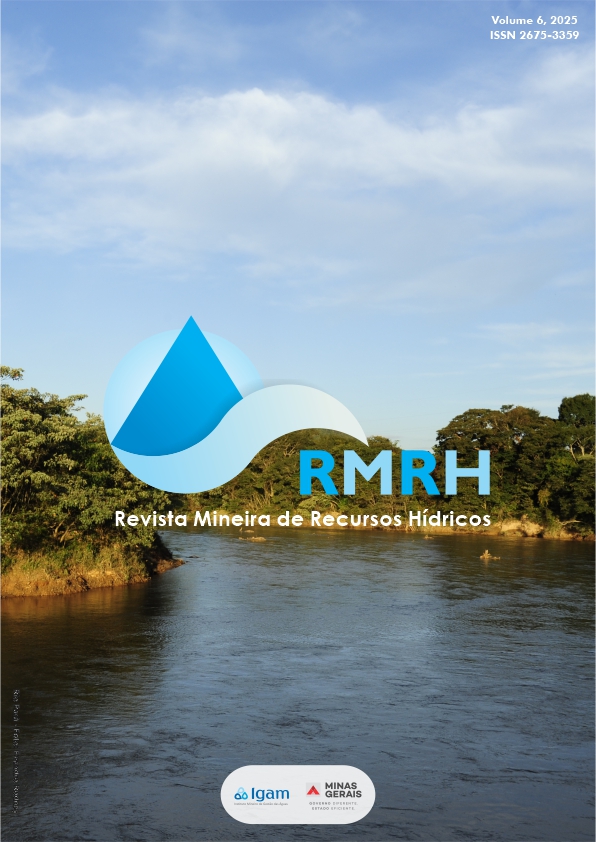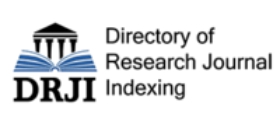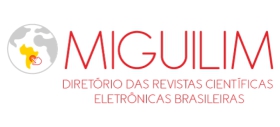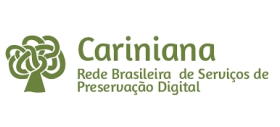Hydrological Models as a tool for implementing the Brazilian National Water Resources Policy
Visualizações: 315DOI:
https://doi.org/10.59824/rmrh.v6.350Keywords:
Hydrological Modeling, Watershed, Basin Committee, Brazilian National Water Resources PolicyAbstract
Water is an extremely important resource for the maintenance of human activities and the Brazilian National Water Resources Policy (PNRH) is the most important legal device for water management and mediation of potential conflicts over its use in Brazil. The effective and efficient implementation of PNRH instruments is an essential task that led to great challenges to managers of this policy, who can be greatly assisted by the adoption of hydrological models. This study shows, based on a literature review, the potential of use of this tool applied to the implementation of PNRH instruments and some of possibilities for using these models by water resource management agencies and watershed committees. The situation of Brazilian legislation in the international context and the instruments contained therein are assessed, as well as the main characteristics of existing hydrological models. Various research and solutions developed based on the use of these models are also analyzed. The results show that the use of models has a strong potential to help deal with some challenges such as changes in land use, climate change, extreme events and issues linked to water quality and quantity. A proposal for using models as a central element of water resources management and integrating all PNRH instruments is presented. The work proposes the use of a model with multiple applications for river basin management and offers some ways to implement this proposal.
Downloads
References
ACHARKI, S. et al. Hydrological modeling of spatial and temporal variations in streamflow due to multiple climate change scenarios in northwestern Morocco. Climate Services, Amsterdam, v. 30, p. 100388, abr. 2023. DOI: https://doi.org/10.1016/j.cliser.2023.100388. Disponível em: https://www.sciencedirect.com/science/article/pii/S2405880723000493?pes=vor&utm_source=scopus&getft_integrator=scopus. Acesso em: 15 nov. 2023. DOI: https://doi.org/10.1016/j.cliser.2023.100388
ADDOR, N.; MELSEN, L. A. Legacy, rather than adequacy, drives the selection of hydrological models. Water Resources Research, Malden, v. 55, n. 1, p. 378-390, jan. 2019. DOI: https://doi.org/10.1029/2018WR022958. Disponível em: https://ueaeprints.uea.ac.uk/id/eprint/69223/. Acesso em: 29 nov. 2023. DOI: https://doi.org/10.1029/2018WR022958
AL KHOURY, I. et al. Impact of land-use change on karst spring response by integration of surface processes in karst hydrology: the ISPEEKH model. Journal of Hydrology, Amsterdam, v. 626, p. 130300, nov. 2023. DOI: https://doi.org/10.1016/j.jhydrol.2023.130300. Disponível em: https://www-scopus-com.ez43.periodicos.capes.gov.br/pages/publications/85174909760. Acesso em: 27 nov. 2023. DOI: https://doi.org/10.1016/j.jhydrol.2023.130300
ALLAN, I. J. et al. Strategic monitoring for the European Water Framework Directive. TrAC Trends in Analytical Chemistry. Amsterdam, v. 25, n. 7, p. 704–715, 1 jul. 2006. DOI: https://doi.org/10.1016/j.trac.2006.05.009. Disponível em: https://researchportal.port.ac.uk/en/publications/strategic-monitoring-for-the-european-water-framework-directive. Acesso em: 30 nov. 2023. DOI: https://doi.org/10.1016/j.trac.2006.05.009
AGÊNCIA NACIONAL DE ÁGUAS (Brasil). Infográfico do Sistema Nacional de Gerenciamento de Recursos Hídricos - SINGREH. [Brasília: ANA.], 2017. Disponível em: https://www.gov.br/ana/pt-br/gestao-da-agua/sistema-de-gerenciamento-de-recursos-hidricos/o-que-e-o-singreh?. Acesso em: 27 nov. 2023.
ARAÚJO, R. S. et al. Water resource management: a comparative evaluation of Brazil, Rio de Janeiro, the European Union, and Portugal. Science of The Total Environment, Amsterdam, v. 511, p. 815–828, abr. 2015. DOI: https://doi.org/10.1016/j.scitotenv.2014.11.098. Disponível em: http://sciencedirect.com/science/article/abs/pii/S0048969714016994? Acessoem: 01 dez. 2023. DOI: https://doi.org/10.1016/j.scitotenv.2014.11.098
AYELE, G. T. et al. Response of streamflow and nutrient loads in a small temperate catchment subject to land use change. Environmental Monitoring and Assessment, Berlin, v. 195, n. 12, p. 1418, dez. 2023. DOI: https://doi.org/10.1007/s10661-023-11828-z. Disponível em: https://link.springer.com/article/10.1007/s10661-023-11828-z. Acesso em: 05 dez. 2023. DOI: https://doi.org/10.1007/s10661-023-11828-z
BETTENCOURT, P. et al. A comparison between the european and the brazilian models for management and diagnosis of river basins. Water Policy, London, v. 23, n. 1, p. 58-76, 1 fev. 2021. DOI: https://doi.org/10.2166/wp.2021.204. Disponível em: https://iwaponline.com/wp/article/23/1/58/79776/A-comparison-between-the-European-and-the. Acesso em: 02 dez. 2023. DOI: https://doi.org/10.2166/wp.2021.204
BORBA, M. L. G. et al. Atenção dada pelo plano nacional de recursos hídricos (PNRH) à integração, à descentralização e à participação. In: XVII SIMPÓSIO BRASILEIRO DE RECURSOS HÍDRICOS,17., 2007, São Paulo. Anais [...]. São Paulo: ABRH, 2007. Disponível em: https://abrh.s3.sa-east-1.amazonaws.com/Sumarios/19/f88da323c875f201edc740b76b7b7738_c63b087b361da5417541ea7c3b4b4390.pdf. Acesso em: 07 nov. 2023.
BRAGA, B. P. F. et al. Pacto federativo e gestão de águas. Estudos Avançados, São Paulo, v. 22, p. 17-42, 2008. DOI: https://doi.org/10.1590/S0103-40142008000200003. Disponível em: https://www.scielo.br/j/ea/a/HKZcynK4dzMcVhrqhS33k8d/?lang=pt. Acesso em: 05 dez. 2023. DOI: https://doi.org/10.1590/S0103-40142008000200003
BRASIL, Lei n. 9.433, de 8 de janeiro de 1997. Institui a Política Nacional de Recursos Hídricos, cria o Sistema Nacional de Gerenciamento de Recursos Hídricos, regulamenta o inciso XIX do art. 21 da Constituição Federal, e altera o art. 1º da Lei nº 8.001, de 13 de março de 1990, que modificou a Lei nº 7.990, de 28 de dezembro de 1989. Disponível em: https://www.planalto.gov.br/ccivil_03/leis/l9433.htm. Acesso em: 11 nov. 2023.
BRESSIANI, D. de A. et al. Review of Soil and Water Assessment Tool (SWAT) applications in Brazil: challenges and prospects. International Journal of Agricultural and Biological Engineering, Pequim, v. 8, n.3, 2015. DOI: 10.3965/j.ijabe.20150803.1765. Disponível em: https://ijabe.org/index.php/ijabe/article/view/1765. Acesso em: 08 dez. 2023.
BRESSIANI, D. et al. An open collaborative Web-Based Brazilian Ecohydrological Simulation Tool – BEST. SIMPÓSIO BRASILEIRO DE RECURSOS HÍDRICOS, 25., 2023, Aracajú. Anais [...]. Aracaju - SE: ABRHidro, 2023. v. 1, p. 1-7. Disponível em: https://files.abrhidro.org.br/Eventos/Trabalhos/191/XXV-SBRH1104-1-0-20230619-171415.pdf. Acesso em: 2 fev. 2024.
BROOKFIELD, A. E. et al. Recent advances in integrated hydrologic models: integration of new domains. Journal of Hydrology, Amsterdam, v. 620, p. 129515, maio, 2023. DOI: https://doi.org/10.1016/j.jhydrol.2023.129515. Disponível em: https://www.sciencedirect.com/science/article/abs/pii/S0022169423004572?. Acesso em:14 jan. 2024. DOI: https://doi.org/10.1016/j.jhydrol.2023.129515
CAMPOS, F. L. M.; COELHO, A. L. N. Geotecnologias, geomorfologia e modelos hidrológicos: possibilidades para o planejamento hídrico e ambiental. Geografía y Sistemas de Información Geográfica (GEOSIG), Buenos Aires, v. 24, p. 1-14, 2022. Disponível em: https://revistageosig.wixsite.com/geosig/geosig-24-2022. Acesso em: 08 dez. 2023.
CAMPOS, V. N. D. O.; FRACALANZA, A. P. Governança das águas no Brasil: conflitos pela apropriação da água e a busca da integração como consenso. Ambiente & Sociedade, São Paulo, v. 13, n. 2, p. 365-382, dez. 2010. DOI: https://doi.org/10.1590/S1414-753X2010000200010. Disponível em: https://www.scielo.br/j/asoc/a/CSQMWFyvcv8MJV4vkMV6dBm/?lang=pt. Acesso em:15 dez. 2023. DOI: https://doi.org/10.1590/S1414-753X2010000200010
CARVALHO, V. S.O. et al. Assessment of land use changes in the Verde River basin using two hydrological models. Journal of South American Earth Sciences, Amsterdam, v. 118, p. 103954, out. 2022. DOI: https://doi.org/10.1016/j.jsames.2022.103954. Disponível em: https://www.sciencedirect.com/science/article/abs/pii/S0895981122002437? Acesso em: 01 dez. 2023. DOI: https://doi.org/10.1016/j.jsames.2022.103954
CASTRO, A. L. A. et al. Applicability and relevance of water scarcity models at local management scales: review of models and recommendations for Brazil. Environmental Impact Assessment Review, Amsterdam, v. 72, p. 126-136, set. 2018. DOI: https://doi.org/10.1016/j.eiar.2018.05.004. Disponível em: https://www.sciencedirect.com/science/article/abs/pii/S0195925517303530?. Acesso em: 28 nov. 2023. DOI: https://doi.org/10.1016/j.eiar.2018.05.004
CEPPI, A. et al. Real time drought forecasting system for irrigation management. Procedia Environmental Sciences, Amsterdam, v. 19, p. 776-784, jan. 2013. DOI: https://doi.org/10.1016/j.proenv.2013.06.086. Disponível em: https://www.sciencedirect.com/science/article/pii/S1878029613003563?. Acesso em: 20 nov. 2023. DOI: https://doi.org/10.1016/j.proenv.2013.06.086
CONSELHO NACIONAL DE MEIO AMBIENTE (Brasil). Resolução CONAMA n° 357, de 17 de março de 2005. Dispõe sobre a classificação dos corpos de água e diretrizes ambientais para o seu enquadramento, bem como estabelece as condições e padrões de lançamento de efluentes, e dá outras providências. Disponível em: https://www.ana.gov.br/portalpnqa/Publicacao/RESOLU%C3%87%C3%83O%20CONAMA%20n%C2%BA%20357.pdf. Acesso em: 20 nov. 2025.
CONSELHO NACIONAL DE RECURSOS HÍDRICOS (Brasil). Resolução CNRH n° 91, de 5 de novembro de 2008. Dispõe sobre procedimentos gerais para o enquadramento dos corpos de água superficiais e subterrâneos. Disponível em: https://www.ana.gov.br/portalpnqa/Publicacao/RESOLU%C3%87%C3%83O%20CNRH%20n%C2%BA%2091.pdf. Acesso em: 20 nov. 2023.
COSTA, D. D. A. et al. Dos instrumentos de gestão de recursos hídricos - o Enquadramento - como ferramenta para reabilitação de rios. Saúde em Debate, Rio de Janeiro, v. 43, n. spe3, p. 35-50, dez. 2019. DOI: https://doi.org/10.1590/0103-11042019s303. Disponível em: https://www.scielo.br/j/sdeb/a/rHLdw9ChCyxV9ZJK5kbZNnD/?lang=pt. Acesso em: 02 dez. 2023. DOI: https://doi.org/10.1590/0103-11042019s303
COUCEIRO, S. R. M.; HAMADA, N. Os intrumentos da Política Nacional de Recursos Hídricos na região norte do Brasil. OecologiaAustralis, Rio de Janeiro, v. 15, n. 04, p. 762-774, dez. 2011. DOI: https://doi.org/10.4257/oeco.2011.1504.02. Disponível em: https://revistas.ufrj.br/index.php/oa/article/view/8165. Acesso em: 11 dez. 2023. DOI: https://doi.org/10.4257/oeco.2011.1504.02
DEVIA, G. K.; GANASRI, B. P.; DWARAKISH, G. S. A review onhydrological models. Aquatic Procedia, Amsterdam, v. 4, p. 1001-1007, 2015. DOI: https://doi.org/10.1016/j.aqpro.2015.02.126. Disponível em: https://www.sciencedirect.com/science/article/pii/S2214241X15001273?. Acesso em: 22 nov. 2023. DOI: https://doi.org/10.1016/j.aqpro.2015.02.126
DICTORO, V. P.; HANAI, F. Y. Implementação, efetividade e conhecimento dos instrumentos da PNRH na bacia hidrográfica Piancó-Piranha-Açú: uma visão de alguns membros do seu respectivo comitê. In: SIMPÓSIO BRASILEIRO DE RECURSOS HÍDRICOS, 21., Brasília, 2015. Anais [...]. Porto Alegre: ABRHidro, 2025.Disponível em: https://files.abrhidro.org.br/Eventos/Trabalhos/4/PAP019215.pdf. Acesso em: 20 nov. 2023.
FARIA, R. S. D. Proposição do enquadramento de corpos hídricos a partir da política da comunidade europeia: uma análise documental. 2020. 79 f. Dissertação (Mestrado em Gestão e Regulação de Recursos Hídricos) – Universidade de Brasília, Brasília - DF, Distrito Federal, 2020. Disponível em: https://repositorio.unb.br/bitstream/10482/40825/1/2020_RafaelaSilvadeFaria.pdf. Acesso em: 10 nov. 2023.
FERRAZ, L. L. et al. Hydrological modeling in an agricultural basin in the brazilianCerrado using satellite precipitation data. Journal of South American Earth Sciences, Amsterdam, v. 130, p. 104548, out. 2023. DOI: https://doi.org/10.1016/j.jsames.2023.104548. Disponível em: https://www.sciencedirect.com/science/article/abs/pii/S0895981123003607?. Acesso em: 14 nov. 2023. DOI: https://doi.org/10.1016/j.jsames.2023.104548
GAO, J. et al. Water footprints of irrigated crop production and meteorological driving factors at multiple temporal scales. Agricultural Water Management, Amsterdam, v. 255, p. 107014, set. 2021. DOI: https://doi.org/10.1016/j.agwat.2021.107014. Disponível em: https://www.sciencedirect.com/science/article/abs/pii/S0378377421002791?. Acesso em: 18 nov. 2023. DOI: https://doi.org/10.1016/j.agwat.2021.107014
GODARA, N.; BRULAND, O.; ALFREDSEN, K. Simulation of flash flood peaks in a small and steep catchment using rain-on-grid technique. Journal of Flood Risk Management, New Jersey, v. 16, n. 3, p. e12898, 2023. DOI: https://doi.org/10.1111/jfr3.12898. Disponível em: https://onlinelibrary.wiley.com/doi/10.1111/jfr3.12898. Acesso em: 06 dez. 2023. DOI: https://doi.org/10.1111/jfr3.12898
HORTON, P.; SCHAEFLI, B.; KAUZLARIC, M. Why do we have so many different hydrological models? A review based on the case of Switzerland. WIREs Water, New Jersey, v. 9, n. 1, p. e1574, jan. 2022. DOI: https://doi.org/10.1002/wat2.1574. Disponível em: https://wires.onlinelibrary.wiley.com/doi/10.1002/wat2.1574. Acesso em: 15 jan. 2024. DOI: https://doi.org/10.1002/wat2.1574
INTERNATIONAL CONFERENCE ON WATER AND THE ENVIRONMENT (ICWE). The Dublin statement on water and sustainable development. Geneva, v. 1, n. 1, 1992. Disponível em: https://www.ielrc.org/content/e9209.pdf. Acesso em: 16 jan. 2024.
JADE, L. Onde está a água no Brasil? 2018. Disponível em: https://www.ebc.com.br/especiais-agua/agua-no-brasil/. Acesso em: 27 nov. 2023.
JAJARMIZADEH, M. HARUN, S. SALARPOUR, M. A Review onTheoreticalConsiderationandTypesof Models in Hydrology. Journalof Environmental Science and Technology, London, v. 5, n. 5, p. 249-261. 2012. DOI: https://10.3923/jest.2012.249.261. Disponível em: https://scialert.net/fulltext/fulltextpdf.php?pdf=ansinet/jest/2012/249-261.pdf. Acesso em: 16 jan. 2024. DOI: https://doi.org/10.3923/jest.2012.249.261
JIMÉNEZ-BONILLA, A. et al. Hydrological modelling and evolution of lakes and playa-lakes in southern Spain constrained by geology, human management and climate change. Science of The Total Environment, Amsterdam, v. 905, p. 167183, dez. 2023. DOI: https://doi.org/10.1016/j.scitotenv.2023.167183. Disponível em: https://www.sciencedirect.com/science/article/pii/S0048969723058102? Acesso em: 28 nov. 2023. DOI: https://doi.org/10.1016/j.scitotenv.2023.167183
KAUFFELDT, A. et al. Technical review of large-scale hydrological models for implementation in operational flood forecasting schemes on continental level. Environmental Modelling & Software, Amsterdam, v. 75, p. 68-76, jan. 2016. DOI: https://doi.org/10.1016/j.envsoft.2015.09.009. Disponível em: https://www.sciencedirect.com/science/article/pii/S1364815215300529?. Acesso em: 07 dez. 2023. DOI: https://doi.org/10.1016/j.envsoft.2015.09.009
KEISER, D. A.; SHAPIRO, J. S. Consequences of the clean water act and the demand for water quality. The Quarterly Journal of Economics, Cambridge, v. 134, n. 1, p. 349-396, fev. 2019. DOI: https://doi.org/10.1093/qje/qjy019. Disponível em: https://academic.oup.com/qje/article-abstract/134/1/349/5092609?redirectedFrom=fulltext&login=false. Acesso em: 12 dez. 2023. DOI: https://doi.org/10.1093/qje/qjy019
KHADKA, D.; BABEL, M. S.; KAMALAMMA, A. G. Assessing the impact of climate and land-use changes on the hydrologic cycle using the SWAT Model in the Mun River Basin in northeast Thailand. Water, Basil, v. 15, n. 20, p. 3672, out. 2023. DOI: https://doi.org/10.3390/w15203672. Disponível em: https://www.mdpi.com/2073-4441/15/20/3672. Acesso em: 17 jan. 2024. DOI: https://doi.org/10.3390/w15203672
KNAPIK, H. G. et al. Avaliação da qualidade da água baseada em metodologia de hierarquização de cargas com vistas ao enquadramento com metas progressivas: estudo de caso da Bacia do Alto Iguaçu. 2007. In: SIMPÓSIO BRASILEIRO DE RECURSOS HÍDRICOS, 27., São Paulo, 2007. Anais [...]. São Paulo: ABRHidro, 2007. Disponível em: https://files.abrhidro.org.br/Eventos/Trabalhos/151/b45943a43c60da0f74f11cdb07fee529_a8d4d21eda9d8e77bdb4ebf1aee1b560.pdf. Acesso em: 02 dez. 2023.
LIN, C.Y.; YANG, Y. C. E.; KUMAR, C. A. Pay-for-practice or Pay-for-performance? A coupled agent-based evaluation tool for assessing sediment management incentive policies. Journal of Hydrology, Amsterdam, v. 624, p. 129959, set. 2023. DOI: https://doi.org/10.1016/j.jhydrol.2023.129959.Disponível em: https://www.sciencedirect.com/science/article/abs/pii/S0022169423009010?. Acesso em: 04 dez. 2023. DOI: https://doi.org/10.1016/j.jhydrol.2023.129959
LIN, Q. et al. Web-based prototype system for flood simulation and forecasting based on the HEC-HMS model. Environmental Modelling& Software, Amsterdam, v. 158, p. 105541, dez. 2022. DOI: https://doi.org/10.1016/j.envsoft.2022.105541. Disponível em: https://www.sciencedirect.com/science/article/abs/pii/S1364815222002419?. Acesso em: 29 nov. 2023. DOI: https://doi.org/10.1016/j.envsoft.2022.105541
LIU, R. et al. Cost-effectiveness and cost-benefit analysis of BMPs in controlling agricultural nonpoint source pollution in China based on the SWAT model. Environmental Monitoring and Assessment, Berlin, v. 186, n. 12, p. 9011-9022, dez. 2014. DOI: https://doi.org/10.1007/s10661-014-4061-6. Disponível em: https://link.springer.com/article/10.1007/s10661-014-4061-6. Acesso em: 20 jan. 2024. DOI: https://doi.org/10.1007/s10661-014-4061-6
LIU, W. et al. Strategy for cost-effective BMPs of non-point source pollution in the small agricultural watershed of Poyang Lake: a case study of the Zhuxi River. Chemosphere, Amsterdam, v. 333, p. 138949, ago. 2023. DOI: https://doi.org/10.1016/j.chemosphere.2023.138949. Disponível em: https://www.sciencedirect.com/science/article/abs/pii/S004565352301216X?. Acesso em: 23 nov. 2023. DOI: https://doi.org/10.1016/j.chemosphere.2023.138949
LUAN, X. et al. Quantitative study of the crop production water footprint using the SWAT model. EcologicalIndicators, Amsterdam, v. 89, p. 1-10, jun. 2018. DOI: https://doi.org/10.1016/j.ecolind.2018.01.046. Disponível em: https://www.sciencedirect.com/science/article/abs/pii/S1470160X18300529?via%3Dihub. Acesso em: 22 nov. 2023. DOI: https://doi.org/10.1016/j.ecolind.2018.01.046
LUO, P. et al. Impact of forest maintenance on water shortages: hydrologic modeling and effects of climate change. Science of The Total Environment, Amsterdam, v. 615, p. 1355-1363, fev. 2018. DOI: https://doi.org/10.1016/j.scitotenv.2017.09.044. Disponível em: https://www.sciencedirect.com/science/article/abs/pii/S1470160X18300529?. Acesso em: 30 nov. 2023. DOI: https://doi.org/10.1016/j.scitotenv.2017.09.044
MESQUITA, L. F. G. Os comitês de bacias hidrográficas e o gerenciamento integrado na Política Nacional de Recursos Hídricos. Desenvolvimento e Meio Ambiente, Curitiba, v. 45, 2018. DOI: https://10.5380/dma.v45i0.47280. Disponível em: https://revistas.ufpr.br/made/article/view/47280. Acesso em: 27 nov. 2023. DOI: https://doi.org/10.5380/dma.v45i0.47280
MOSBAHI, M. et al. Modeling hydrological responses to land use change in Sejnane Watershed, northern Tunisia. Water, Basil, v. 15, n. 9, p. 1737, abr. 2023. DOI: https://doi.org/10.3390/w15091737. Disponível em: https://www.mdpi.com/2073-4441/15/9/1737. Acesso em: 18 nov. 2023. DOI: https://doi.org/10.3390/w15091737
MTIBAA, S.; HOTTA, N.; IRIE, M. Analysis of the efficacy and cost-effectiveness of best management practices for controlling sediment yield: a case study of the Joumine watershed, Tunisia. Science of The Total Environment, Amsterdam, v. 616-617, p. 1-16, mar. 2018. DOI: https://doi.org/10.1016/j.scitotenv.2017.10.290. Disponível em: https://www.sciencedirect.com/science/article/abs/pii/S0048969717330085?. Acesso em:14 dez. 2023. DOI: https://doi.org/10.1016/j.scitotenv.2017.10.290
NEPAL, D. et al. Assessing hydrological and water quality responses to dynamic landuse change at watershed scale in Mississippi. Journal of Hydrology, Amsterdam, v. 625, p. 129983, out. 2023. DOI: https://doi.org/10.1016/j.jhydrol.2023.129983. Disponível em: https://www.sciencedirect.com/science/article/abs/pii/S0022169423009253?. Acesso em: 10 jan. 2024. DOI: https://doi.org/10.1016/j.jhydrol.2023.129983
OLIVEIRA, V. A. et al. Modeling the effects of climate change on hydrology and sediment load in a headwater basin in the brazilianCerrado biome. Ecological Engineering, Amsterdam, v. 133, p. 20-31, ago. 2019. DOI: https://doi.org/10.1016/j.ecoleng.2019.04.021. Disponível em: https://www.sciencedirect.com/science/article/abs/pii/S0925857419301284?. Acesso em: 02 dez. 2023. DOI: https://doi.org/10.1016/j.ecoleng.2019.04.021
OLIVEIRA, K. D. et al. Impacts of sugarcane expansion on water availability in a river basin in southeastern Brazil. CATENA, Amsterdam, v. 216, p. 106437, set. 2022. DOI: https://doi.org/10.1016/j.catena.2022.106437. Disponível em: https://www.sciencedirect.com/science/article/abs/pii/S0341816222004234?. Acesso em: 16 dez. 2023. DOI: https://doi.org/10.1016/j.catena.2022.106437
PEREIRA, M.; KAYSER, R.; COLLISCHONN, W. Integração do modelo hidrológico para grandes bacias MGB IPH e Sistemas de Informação Geográfica para suporte à decisão de outorga de direito de uso da água. Revista de Gestão de Água da América Latina, Porto Alegre, v. 9, n. 2, p. 21-33, 2012. DOI: https://doi.org/10.21168/rega.v9n2.p21-33. Disponível em: https://www.abrhidro.org.br/SGCv3/publicacao.php?PUB=2&ID=95&SUMARIO=1299. Acesso em: 24 nov. 2023. DOI: https://doi.org/10.21168/rega.v9n2.p21-33
RÁPALO, L. M. C. et al. Effects of land-use and -cover changes on streamflow regime in the brazilian Savannah. Journal of Hydrology: Regional Studies, Amsterdam, v. 38, p. 100934, dez. 2021. DOI: https://doi.org/10.1016/j.ejrh.2021.100934. Disponível em: https://www.sciencedirect.com/science/article/pii/S2214581821001634?. Acesso em: 22 nov. 2023. DOI: https://doi.org/10.1016/j.ejrh.2021.100934
RODRIGUES, A. L.; LEAL, L. V. M. Outorga e cobrança pelo uso dos recursos hídricos como instrumentos de gestão da bacia hidrográfica do Rio Paranaíba. Revista de Direito, Viçosa, v. 11, n. 01, p. 61-101, 30 ago. 2019. DOI: https://doi.org/10.32361/20191116423. Disponível em: https://periodicos.ufv.br/revistadir/article/view/6423. Acesso em: 11 jan. 2024. DOI: https://doi.org/10.32361/20191116423
SENRA, J. C. B.; SOUZA, R. D. S.; BAPTISTA, M. B. O papel do plano nacional de recursos hídricos na implementação de uma política nacional de águas subterrâneas. Águas Subterrâneas, Belo Horizonte, jan. 2012. Disponível em: https://aguassubterraneas.abas.org/asubterraneas/article/view/27762. Acesso em: 27 nov. 2023.
SERRÃO, E. A. de O. et al. Hydrological processes in a watershed on the transition from Amazon to Cerrado in Brazil. Journal of South American Earth Sciences, Amsterdam, v. 129, p. 104507, set. 2023. DOI: https://doi.org/10.1016/j.jsames.2023.104507. Disponível em: https://www.sciencedirect.com/science/article/abs/pii/S0895981123003188?. Acesso em: 22 nov. 2023. DOI: https://doi.org/10.1016/j.jsames.2023.104507
SHARMA, S. Effects of urbanization on water resources- facts and figures. International Journal of Scientific and Engineering Research, Rajasthan, v. 8, n. 4, 2017. Disponível em: https://www.researchgate.net/publication/317950856_EFFECTS_OF_URBANIZATION_ON_WATER_RESOURCES-FACTS_AND_FIGURES. Acesso em: 03 dez. 2023.
SIDLE, R. C. Strategies for smarter catchment hydrology models: incorporating scaling and better process representation. Geoscience Letters, Berlin, v. 8, n. 1, p. 24, jun. 2021. DOI: https://doi.org/10.1186/s40562-021-00193-9. Disponível em: https://geoscienceletters.springeropen.com/articles/10.1186/s40562-021-00193-9. Acesso em: 14 dez. 2023. DOI: https://doi.org/10.1186/s40562-021-00193-9
SILVA, N. R. da; ALBUQUERQUE, T. de N. Enquadramento de corpos de água: um instrumento da Política Nacional de Recursos Hídricos. Geoambiente On-line, Jataí, n. 32, dez. 2018. DOI: https//10.5216/revgeoamb.v0i32.54654. Disponível em: https://revistas.ufj.edu.br/geoambiente/article/view/54654. Acesso em: 27 nov. 2023.
SILVA, S. de M. Avaliação Ambiental Estratégica na Política Nacional de Recursos Hídricos - PNRH. 2008. Tese (Doutorado em Desenvolvimento Sustentável) – Universidade de Brasília, Brasília - DF, 2008. Disponível em: https://repositorio.unb.br/handle/10482/2691. Acesso em: 12 dez. 2023.
SILVEIRA, N. T.et al. Qualidade da Água e modelagem hidrológica: aplicabilidade do Sistema de Unidades de Respostas Hidrológicas para Pernambuco (SUPer). Revista Brasileira de Sensoriamento Remoto, Pernambuco, v.3, n.3, 2022. Disponível em: https://periodicos.ufs.br/index/login?source=%2Frbsr%2Farticle%2Fview%2F18691. Acesso em: 28 nov. 2023.
SOOD, A.; SMAKHTIN, V. Global hydrological models: a review. Hydrological Sciences Journal, United Kingdom, v. 60, n. 4, p. 549–565, abr. 2015. https://doi.org/10.1080/02626667.2014.950580. Disponível em: https://www.tandfonline.com/doi/full/10.1080/02626667.2014.950580. Acesso em: 29 nov. 2023. DOI: https://doi.org/10.1080/02626667.2014.950580
SOUZA, M. V. K. de; SILVA, H. de P. Política Nacional de Recursos Hídricos (PNRH): um estudo comparativo sobre arrecadação e desembolso das bacias hidrográficas interestaduais no Brasil. Caderno PAIC, Curitiba, v. 22, n. 1, p. 659-684, 9 dez. 2021. Disponível em: https://cadernopaic.fae.edu/cadernopaic/article/view/477. Acesso em: 02 dez. 2023.
SOUZA, R. M. de; KOBIYAMA, M.; SANTOS, I. dos. O modelo SWAT como ferramenta para a gestão de recursos hídricos: avaliação de vazões de outorga na bacia hidrográfica do altíssimo Rio Negro. In: SIMPÓSIO BRASILEIRO DE RECURSOS HÍDRICOS, 18., Campo Grande, 2009. Anais [...]. Campo Grande, MS: ABRHidro, 2009. Disponível em: https://www.abrhidro.org.br/SGCv3/publicacao.php?PUB=3&ID=110&SUMARIO=2047. Acesso em: 12 jan. 2024.
SUN, Y.et al. Projecting China’s future water footprints and water scarcity under socioeconomic and climate change pathways using an integrated simulation approach. Climate Services, Amsterdam, v. 30, p. 100385, abr. 2023. DOI: https://doi.org/10.1016/j.cliser.2023.100385. Disponível em: https://www.sciencedirect.com/science/article/pii/S2405880723000468?. Acesso em: 28 nov. 2023. DOI: https://doi.org/10.1016/j.cliser.2023.100385
TAN, L.; YANG, G.; ZHU, Q.; WAN, R.; SHI, K. Optimizing payment for ecosystem services in a drinking water source watershed by quantifying the supply and demand of soil retention service. Journal of Environmental Management, Amsterdam, v. 331, p. 117303, abr. 2023. DOI: https://doi.org/10.1016/j.jenvman.2023.117303. Disponível em: https://www.sciencedirect.com/science/article/abs/pii/S0301479723000919?. Acesso em: 09 jan. 2024. DOI: https://doi.org/10.1016/j.jenvman.2023.117303
TEFERA, G. W.; DILE, Y. T.; SRINIVASAN, R.; BAKER, T.; RAY, R. L. Hydrological modeling and scenario analysis for water supply and water demand assessment of Addis Ababa city, Ethiopia. Journal of Hydrology, Amsterdam, v. 46, p. 101341, abr. 2023. DOI: https://doi.org/10.1016/j.ejrh.2023.101341. Disponível em: https://www.sciencedirect.com/science/article/pii/S2214581823000289. Acesso em: 11 dez. 2023. DOI: https://doi.org/10.1016/j.ejrh.2023.101341
TUNDISI, J. G.; TUNDISI, T. M. Limnologia. São Paulo: Oficina de Textos, 2008.
UNIYAL, B. et al. Identification of critical areas and evaluation of best management practices using SWAT for sustainable watershed management. Science of The Total Environment, Amsterdam, v. 744, p. 140737, nov. 2020. DOI: https://doi.org/10.1016/j.scitotenv.2020.140737. Disponível em: https://www.sciencedirect.com/science/article/abs/pii/S0048969720342595. Acesso em: 05 dez. 2023. DOI: https://doi.org/10.1016/j.scitotenv.2020.140737
VEITH, T. L.; WOLFE, M. L.; HEATWOLE, C. D. Optimization procedure for cost effective BMP placement at a watershed scale. Journal of the American Water Resources Association, New Jersey, v. 39, n. 6, p. 1331-1343, dez. 2003. DOI: https://doi.org/10.1111/j.1752-1688.2003.tb04421.x. Disponível em: https://onlinelibrary.wiley.com/doi/epdf/10.1111/j.1752-1688.2003.tb04421. Acesso em: 30 nov. 2023. DOI: https://doi.org/10.1111/j.1752-1688.2003.tb04421.x
WAGENER, T. et al. A framework for development and application of hydrological models. Hydrology and Earth System Sciences, Göttingen, v. 5, n. 1, p. 13-26, mar. 2001. DOI:https://doi.org/10.5194/hess-5-13-2001. Disponível em: https://hess.copernicus.org/articles/5/13/2001/hess-5-13-2001.html. Acesso em: 01 dez. 2023. DOI: https://doi.org/10.5194/hess-5-13-2001
WANG, W. et al. Effects of best management practices on nitrogen load reduction in tea fields with different slope gradients using the SWAT model. Applied Geography, Germany, v. 90, p. 200-213, jan. 2018. DOI: https://doi.org/10.1016/j.apgeog.2017.08.020. Disponível em: https://www.sciencedirect.com/science/article/abs/pii/S0143622817302692. Acesso em: 22 nov. 2023. DOI: https://doi.org/10.1016/j.apgeog.2017.08.020
WANG, W. et al. Scenario analysis for the sustainable development of agricultural water in the Wuyuer River basin based on the WEP model with a reservoir and diversion engineering module. Science of The Total Environment, Amsterdam, v. 758, p. 143668, mar. 2021. DOI: https://doi.org/10.1016/j.scitotenv.2020.143668. Disponível em: https://www.sciencedirect.com/science/article/abs/pii/S0048969720371990. Acesso em: 08 dez. 2023. DOI: https://doi.org/10.1016/j.scitotenv.2020.143668
WEILER, M.; BEVEN, K. Do we need a Community Hydrological Model? Water Resources Research, New Jersey, v. 51, n. 9, p. 7777-7784, set. 2015. DOI: https://doi.org/10.1002/2014WR016731. Disponível em: https://agupubs.onlinelibrary.wiley.com/doi/full/10.1002/2014WR016731. Acesso em: 20 jan. 2024. DOI: https://doi.org/10.1002/2014WR016731
WOO, S.Y.et al.Evaluating the impact of interbasin water transfer on water quality in the recipient river basin with SWAT. Science of The Total Environment, Amsterdam, v. 776, p. 145984, jul. 2021. https://doi.org/10.1016/j.scitotenv.2021.145984. Disponível em: https://www.sciencedirect.com/science/article/abs/pii/S0048969721010512. Acesso em: 07 dez. 2023. DOI: https://doi.org/10.1016/j.scitotenv.2021.145984
WU, L.et al. Integrated modeling framework for evaluating and predicting the water resources carrying capacity in a continental river basin of Northwest China. Journal of Cleaner Production, Amsterdam, v. 204, p. 366-379, 10 dez. 2018. DOI: https://doi.org/10.1016/j.jclepro.2018.08.319. Disponível em: https://www.sciencedirect.com/science/article/abs/pii/S0959652618326805. Acesso em: 05 dez. 2023. DOI: https://doi.org/10.1016/j.jclepro.2018.08.319
YU, X.; ZHANG, J. The Application and applicability of HEC-HMS model in flood simulation under the condition of river basin urbanization. Water, Basil, v. 15, n. 12, p. 2249, jun. 2023. DOI: https://doi.org/10.3390/w15122249. Disponível em: https://www.mdpi.com/2073-4441/15/12/2249. Acesso em: 25 nov. 2023. DOI: https://doi.org/10.3390/w15122249
Downloads
Published
How to Cite
Issue
Section
License
Copyright (c) 2025 Fábio Luiz Mação Campos, André Luiz Nascentes Coelho, Bruno Sara Delmaschio, Monica Amorim Gonçalves, Danielle de Almeida Bressiani

This work is licensed under a Creative Commons Attribution-NonCommercial 4.0 International License.

























